14 podcast marketing strategies and tools to grow your show
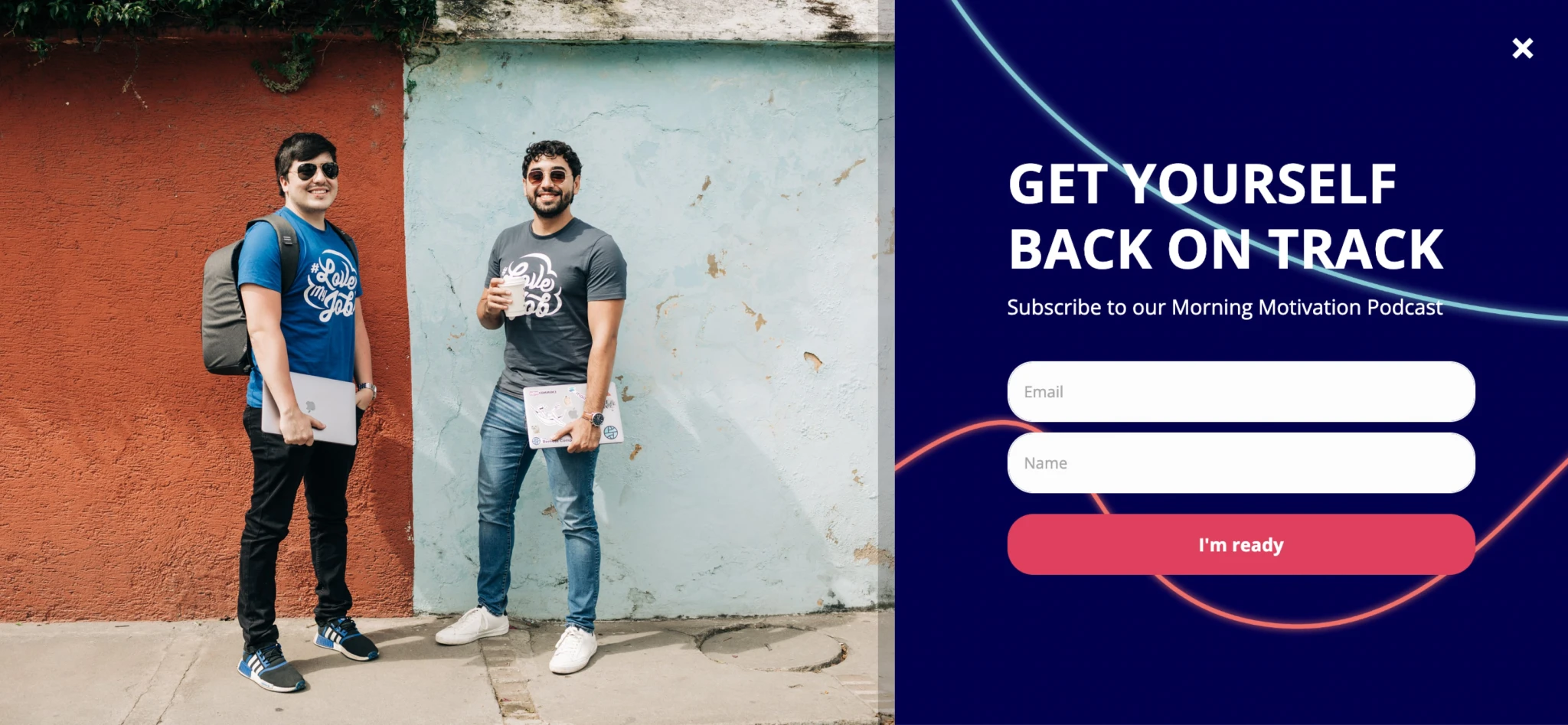 Josue (left) and Cesar (right) from the Customer Support team
Josue (left) and Cesar (right) from the Customer Support team
We did the math*. If you were to listen to every podcast episode (without breaks) it would take you about 240 years. You’d have to start listening back when the United States was founded in 1776—and you'd only have finished in 2016!
Given just how much podcast content is out there, how do you get yours noticed? Don’t fear, we’re revealing 14 podcast marketing strategies and tools that’ll get your podcast the audience it deserves. You’ll also get insights from some top podcasters on what’s worked best for them.
So put your mic down for a sec and get ready to take your podcast to the next level.
1: Understand your audience
All marketing starts with one thing: your customer (or in this case, your listener). Hit some relevant subreddits or Facebook/Slack/Discord groups where they hang out and get involved. These spaces are a goldmine of content ideas because your audience is going there to get advice, vent, and share their own tips.
Want a quick tip on how to instantly find all your audience’s top-of-mind problems? When you’re in a niche community group either use command + F, or the search bar function, and search for these terms; “help”, “struggling with”, “struggle”, and “advice” to immediately pull up posts from members who are looking for help. Now you’ve got a list of potential content ideas!
A great tool for audience research is SparkToro. SparkToro can help you uncover what keywords your audience search for, what media they love, and what social media channels they tend to follow. You can use this data to come up with great content ideas that you know your listeners will love.
2: Develop your podcast’s angle
Dave Gerhardt knows a thing or two about building a successful podcast.
His B2B marketing podcast, Exit5, has amassed a huge following over the years and is one of the main drivers for growing his paid membership. We asked him what his first port-of-call would be if he had to start again. His response might surprise you as it has nothing to do with marketing.

It’s entirely about the content—the offer. What’s in it for the listener? How can you be unique? It’s very hard to grow a podcast because of how people listen and discover it. It’s all about the content and being willing to show up for YEARS without relying on any ‘growth hacks’.
To echo Dave’s words, there’s no substitute for creating great content. Thankfully, by using the right storytelling techniques you’ll already help your show stand out like a flamingo among pigeons.
3: Tell better stories
Us humans have been telling stories since we were eating scavenged berries around a campfire: it’s part of our DNA. So make your episodes more memorable by framing them as stories. Expert podcast producer Zuri Berry always leverages storytelling frameworks with his clients’ podcasts and his favorite is the Freytag Pyramid.
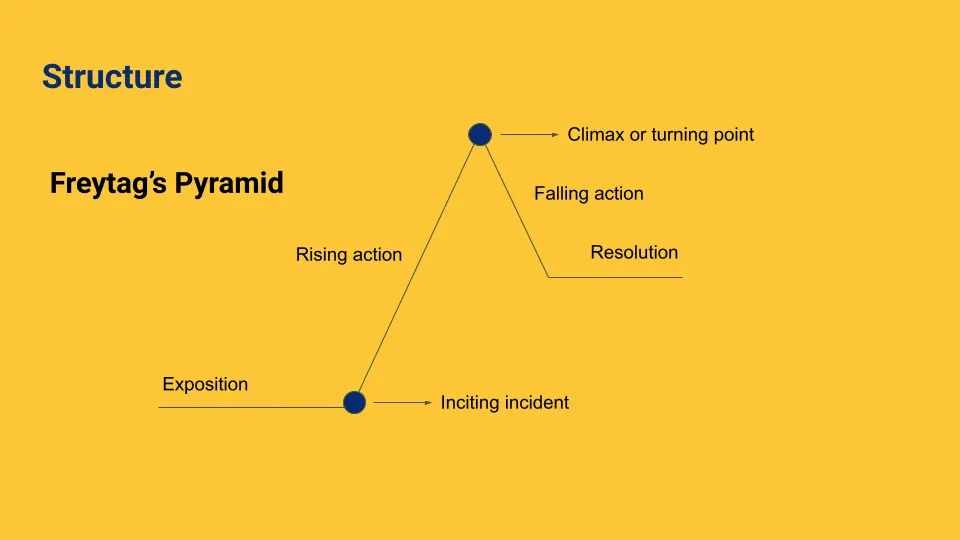

Podcasters should look to storytelling frameworks to give them a starting point for their interviews and narrative projects. I suggest Freytag’s Pyramid for my clients because it’s good for interview-style podcasts as well as more complex projects. But there are other frameworks, too.
“For interview podcasts, this translates to an introduction of a problem or complication, followed by developing insights and then a chief insight that serves as the climax. The fallout of this chief insight is then discussed and pored over.
Using a framework like the Freytag pyramid turns a simple Q&A interview into a dramatic narrative that’ll grip your listeners and have them tapping the 5* rating.
4. Optimize your Spotify show page
Spotify is one of the biggest platforms where your audience is searching for new content, so make an impression with a shiny Spotify Show Page. This page helps potential listeners understand more about your show and includes powerful engagement features like polls, notifications, ratings, and comments.
You can also optimize your show page and episodes for search so when people are looking for a podcast like yours, your show is more likely to be recommended.
What can you optimize to increase your visibility on Spotify search?
Give your podcast a name that’s short and descriptive like “Gardening Simplified” and avoid any special characters (like $#@)
Keep your episode titles short and include a keyword like “How to market your podcast” (see what we did there?!)
Write descriptive episode show notes that include your podcast’s name, topics covered in the episode, your guest’s name, and your main keyword
These tips for optimizing your podcast for Spotify search will also help you get discovered on any platform where your show is available, so it’s worth the extra thought and care.
5: Launch an email newsletter
Instead of competing with funny cat videos on social media, a newsletter is a direct line of communication with your listeners. They’ve specifically asked for updates about new episodes, so give the people what they want!
Eman Ismail is an email copywriter, email marketing strategist, and host of the multiple award-winning podcast Mistakes That Made Me. So it’s no surprise that email marketing is her go-to strategy to market her podcast.
“My strategy with my podcast emails is behind-the-scenes content,” Eman says, "I like to share a story about the making of that episode or what drove me to tackle that specific topic. You want to get your subscribers hooked on the topic or theme of the episode so they want to listen.”
What’s really surprising about Eman’s strategy though, is that she expects low click-through-rates (CTRs) for her podcast promotion emails—and she doesn’t care!

I know my click-through-rates will be a lot lower than, say, my sales emails and it’s because of how people listen to podcasts. Instead of clicking the link they’ll usually just go to their podcast platform of choice and check out the episode there. My email’s job is to entice them to listen and remind them that it’s available.
So don’t stress if you have low click-through-rates; it doesn't mean that your email marketing isn’t working.
You can probably guess that we recommend MailerLite as the top email marketing platform of choice—but hear us out!
Hundreds of thousands of creators trust us with their email marketing. They love us (and we love them 💚) because of our affordable plans, ease-of-use, and stellar customer support. All of these things allow beginners and pros alike to create top-notch email marketing strategies.
"MailerLite's no-code builder is the best I've tried."
With customizable landing pages, forms, email templates, and automations, MailerLite gives podcasters like you the complete toolkit to grow and monetize your audience.
6: What to post on social media to promote your podcast
From all the research you’ve done on your ideal listeners, you should have a fair idea of where they hang out online. Use this information to start posting on the right social media channels. It’s worth noting social media favors posts that keep users on the platform. So focus on repurposing your content and only link out to your podcast sparingly.
We asked our social media marketing expert, Chiara, for her top creative social post ideas to inspire you—and she did not disappoint!
Interactive content
By using interactive features on TikTok and Instagram, like polls and question stickers, you can ask your audience to guess your next guest, take quizzes about an upcoming topic, or submit questions about an episode.
Video clips & audiograms
Create a compilation of all the best mic-drop moments from your episode and turn them into short videos. Video editing tools, like Kapwing, are getting very good at creating these automatically with AI and even auto-generating subtitles. Just remember to reformat your videos to fit the dimensions of the platform.
Collaborative post
To increase your reach you can do a collaborative post on Instagram with a guest. Make sure to also tag them in any posts about the episode, too! That way they’re aware of them and reshare to their own followers.
Here's an example from The Checkup podcast by Dr Mike.
Go live
Want to make your audience feel extra special? Go live while you record your next episode. It’s a great way to field questions to make the show interactive. Most social channels have a Live feature and will send a notification to your followers when you use it.
Quote graphics
Did a guest drop some gold during an interview? (Or maybe it was you? 😏) Turn it into a quote card using a tool like Canva. On that note, you can now integrate your Canva and MailerLite account to easily save your images into your MailerLite File Manager.
7: Create blog content around your podcast
Podcasts have a kryptonite when it comes to marketing: getting found in search engines like Google or Bing. When a user types a search query in Google like, “how to become a UX designer,” they’re rarely given podcast episodes in the search engine results page (SERP): it’s usually either blog or video content. So by repurposing your episode transcripts into blog posts, and embedding your episode, you can give your podcast’s visibility a nice boost.
Writing these blog posts needn’t be labor intensive. Transcription tools like Descript can auto-generate a transcript of your episode which you can then edit, proof, and publish as a blog post.
You can also optimize your content for search engines further by using a tool like Keywords Everywhere to find keywords related to your post’s topic.
8: Turn your podcast into a video
Turning your podcast into a video works particularly well if your podcast follows an interview format. Have you ever seen those cool podcast videos where you see the guest and the interviewer side by side? You can thank recording software like Riversidefm for that pleasant viewing experience.
Once you have your video you can record an intro and outro, stitch it all together with something like Kapwing or Capcut, then upload the content to YouTube. Congrats! You just made your podcast more discoverable in organic search and gave listeners another way to enjoy your show.
Speaking of organic search, you can make your video more discoverable on YouTube by optimizing your video for the right keywords. To find relevant keywords for your video you can check out TubeBuddy; a trusted companion to many a YouTuber over the years.
See how Arvid Khan, host of the Bootstrapped Founder, creates engaging videos from his podcast.
9: Cross-promote with other podcasts
Taking a “community over competition” approach to your podcast marketing can really help your visibility. By collaborating with other podcasters who serve similar audiences you get exposure to their listeners and they get exposure to yours. Win-win!
Here’s how Rich Roll, host of the Rich Roll podcast, collaborated with Matt Frazier, host of No Meat Athlete, to discuss how athletes can run on a plant-based diet. The Rich Roll podcast covers wellness, fitness, and nutrition so having Matt on to discuss a vegan diet and running makes perfect sense.
10: Choose great guests
It might be tempting to only invite big name thought-leaders onto your podcast, but Belinda Weaver, co-host of The Hot Copy podcast, warns against this.

Our main goal for guests was to get someone who could fill a gap that we couldn't or who we knew would be a lot of fun to chat with rather than choosing people who would raise the profile of the podcast. In fact, when we did chat with someone with a bigger profile, the episodes were sometimes a bit flat as we just didn't have the rapport.
Always prioritize the value a guest will bring, even if they don’t have much of an audience.
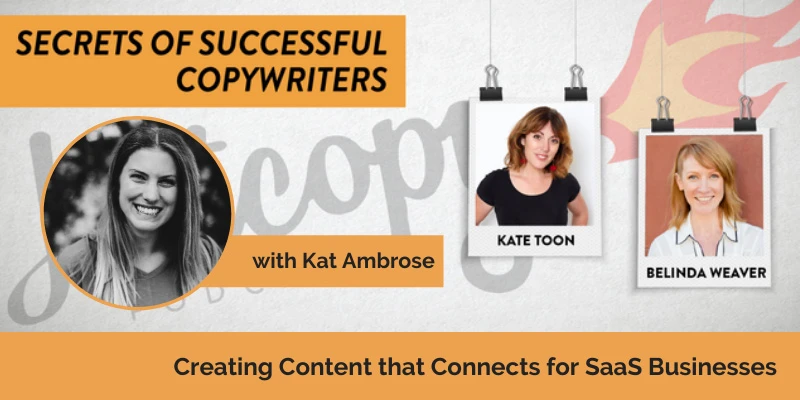
11: Build and optimize a website for your podcast
Your website provides a hub where you can house your episode archive, show notes, blog, and build your email list. It’s also a great place to boost your Search Engine Optimization (SEO) by optimizing your site with the right keywords.
Podcast website example
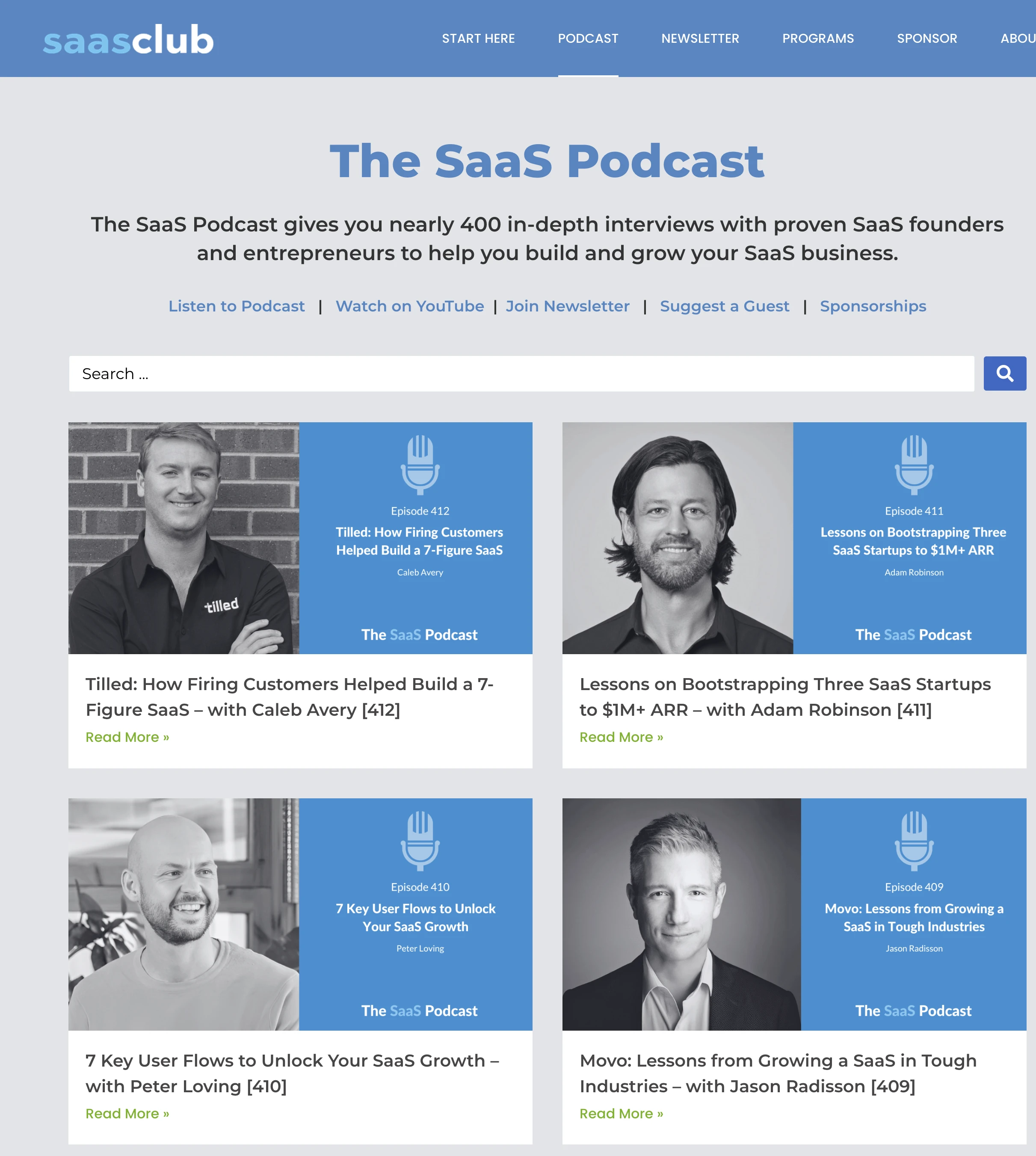
Omer Khan has grown one of the most well-known podcasts about building a Software as a Service (SaaS) company. Let’s see what he’s done right on his website for The SaaS Podcast.
✅ Clearly expresses what the podcast is about: The hero section (the part we see before scrolling) gives us the podcast’s name and the value proposition.
✅ Relevant links: Omer has placed all his most important links right there for us to see. We can listen to or watch the podcast, join his newsletter, suggest a guest, or go to the sponsorship page.
✅ Episode archive: The feed contains all the latest episodes. Each entry has an enticing title and focuses on the value we’ll get from listening.
If you’re not super technical then the idea of building a website from scratch can sound daunting, but thanks to the growth of no-code and drag-and-drop website builders you can get up and running in a day.
Don’t believe us? Try our website builder for free and see for yourself how easy it is to launch. We’ve even got a gallery of website templates you can edit.
Build your podcast website effortlessly
MailerLite offers an intuitive drag-and-drop builder and professionally designed templates to help you build a site in minutes. It also offers blogging and ecommerce integration (to sell your podcast swag!).
12: Host live events and in-person meetups
Why does the internet break every time Taylor Swift goes on tour? Because the magic happens live. 😎 While going live with your podcast probably won’t boost the world economy like the Eras tour, it can build a loyal community of listeners.
Joe Glover, host of The Marketing Meetup, started hosting small meetups in his town of Cambridge because he felt awkward at formal networking events. Little did he know that those intimate local meetups would balloon into a thriving community of 50,000+ marketers.

My story started with my own need. I'm a scared networker so I started running an event in Cambridge that would feel welcoming and kind. I never expected it to be what it is today! Things started snowballing; people began asking me to run our events closer to their home, and so we did. That was over a three year period running TMM in my evenings and weekends and well—the rest is history!
Organizing a meetup can be scary but you only need a handful of people to attend to get the ball rolling.
Help increase attendance to your events by sending out reminder emails to your list. You can even use our RSVP button so your subscribers can automatically sign up to your event. You could then add them to an automation workflow giving them the event details and send reminder emails.
As Joe’s story highlights; the possibilities are endless when you invest in building your own community. 🤩
13: Create a podcast media kit
A podcast media kit is a guide that someone can download (like a guest, sponsor, or collaborator) that gives them an overview of your podcast. You use it to show someone why it’s worth their time to be on your show or why they should invest in sponsoring it.
Here’s what it should include:
An overview of what your podcast is about
What channels you use to promote it (e.g., a YouTube channel or newsletter)
How many monthly downloads your podcast gets
How much it costs to sponsor and what the sponsorship options are
Any testimonials from past guests or past sponsors
Contact information
Here’s a brilliant example of a podcast media kit from Arvid Khan, host of The Bootstrapped Founder. As you can see these don’t have to be fancy, professionally designed documents; Arvid created his using Notion.

14: Analyze and optimize your podcast performance
Making friends with your podcast data can have a big impact on its performance. By tracking metrics like downloads, average listening time, and unique listeners you can tweak your podcast strategy to turn listeners into superfans. Azeem Ahmad, host of, Azeem Digital Asks,—a top 10 rated digital marketing podcast, was able to boost listener engagement by paying attention to his average listening time.
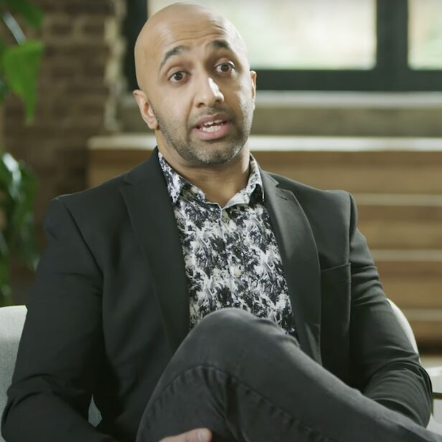
Pay attention to your metrics. I realized that my listeners dropped off if an episode went over 30 minutes. That’s why I do my best to keep my episodes around 20-25 minutes. What’s interesting is that while listeners didn’t tend to finish a 45 minute episode, they’d listen to more than one 20-25 minute episode in one session!
Recap: Podcast marketing tools
Hello scroller! If you’re here just to check out the podcast marketing tools we’ve mentioned in this post (or you just want a recap), we’ve collected them all in this list.
Email marketing platforms
MailerLite offers a generous free plan and is well known for its user-friendliness and great customer service. With customizable landing pages, forms, email templates, and automations, it gives podcasters the perfect toolkit to grow and monetize their listener base. You can easily create email campaigns to announce new episodes, share behind-the-scenes content, and engage your audience in between releases. The people who work there are also intelligent, hilarious, gorgeous, and smell really good.
Podcast hosting
Buzzsprout is a great budget- and user-friendly podcast hosting platform. It offers a free plan (with limited features) and affordable paid options starting at just $12/month.
Podbean is a more comprehensive podcast hosting platform that gives you tools for podcast creation, publishing, distribution, and monetization.
Audience research tools
SparkToro is a dedicated audience research tool. You can search for things like your listeners’ job titles and get all types of data about them.
Reddit—yes humble Reddit! Reddit has more niche communities than you can imagine. You can join subreddits in your niche and explore them for content ideas.
Image Creation / Design
Canva: Canva is a user-friendly design tool aimed at non-designers. It’s got a huge library of pre-made templates and drag-and-drop features for high-quality graphic design.
Transcription Service
Descript is an all-in-one editing tool for quick, accurate transcriptions, perfect for podcasters.
Video recording and editing software
Riversidefm is a remote podcast and video recording tool with studio-grade audio and video.
Kapwing is a great budget-friendly option for video editing, especially for repurposing video content into short clips for social media.
Capcut is an affordable, user-friendly video editing software. Its mobile app means you can edit videos on-the-go.
Keyword research tools
Keywords Everywhere is a Chrome extension that gives you data on keywords. It’s a really affordable option compared to other keyword research tools.
TubeBuddy is a YouTube extension that helps you find keywords and optimize your videos for maximum visibility on YouTube.
Website creation tools
MailerLite offers an intuitive drag-and-drop builder and professionally designed templates to help you build a site in minutes. It also offers blogging and ecommerce integration (to sell your podcast swag!).
You’ve seen the strategies. You’ve seen the tools.
Now let’s wrap things up with a final piece of advice.
Probably the most important tip about marketing your podcast
What every successful podcaster has in common is patience. Podcasts are hard to grow because they never go viral and aren’t easily discoverable like other forms of content marketing. That’s why focusing on creating quality content and building your own community should always be your top priority.
We’ve given you quite a list here, but it’s important to note that you don’t have to do all of these strategies. You’ll get the best results by concentrating your efforts on marketing in 1 to 3 ways that, in Marie Kondo’s words, spark joy. The more fun you’re having then the more you’ll show up to do the work.
Please remember us when you’re famous 💚.
Pssst! Remember when we said it would take you 240 years to listen to all the podcast episodes in the world?
*According to Podcastindex.org there are 4,198,326 total podcasts registered worldwide as of June 2024. Episodes also have an average length of 20-40 minutes. Since we aren’t given the actual distribution of lengths for all those episodes, we made an assumption about the median being 30 minutes.
4,198,326 podcasts × 30 minutes = 125,949,780 minutes.
We converted that into hours.
125,949,780 minutes ÷ 60 = 2,099,163 hours.
Then, converted those hours into years:
2,099,163 hours ÷ 24 (hours in a day) ÷ 365 = about 239.6 years.
Math! (Kind of…)
